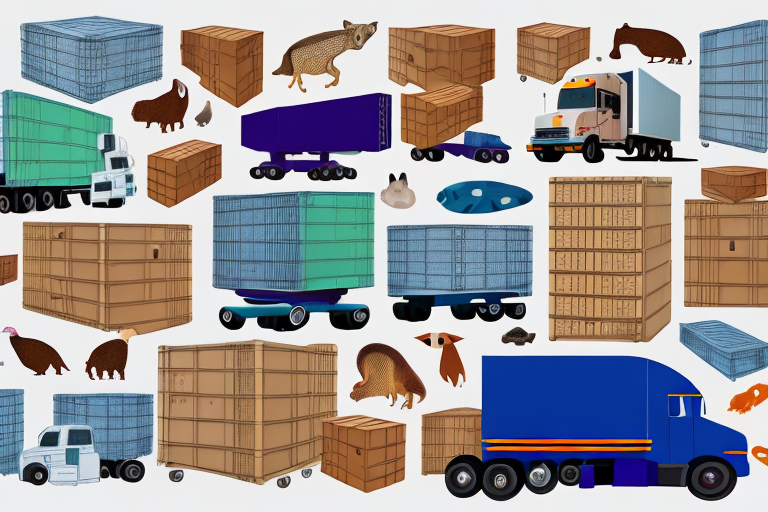Sustainability in Food Packaging: An Overview
In recent years, the urgency to adopt sustainable practices has intensified, with food packaging standing out as a critical area for improvement. As the demand for convenience grows, so does the environmental burden of traditional packaging materials. This article delves into the evolution of food packaging, the significance of eco-friendly alternatives, and the multifaceted benefits they offer to both the environment and society.
History of Food Packaging and Environmental Impact
Food packaging has evolved significantly over centuries. Early methods utilized natural materials like leaves, shells, and animal hides, primarily for preservation and transportation. The Industrial Revolution marked a pivotal shift, introducing mass-produced packaging made from plastics, metals, and glass. While these materials enhanced durability and convenience, they also led to increased environmental challenges. According to the Environmental Protection Agency (EPA), packaging accounts for nearly 30% of the total municipal solid waste in the United States.
What is Eco-Friendly Food Packaging?
Eco-friendly food packaging encompasses materials that are renewable, biodegradable, or recyclable, significantly minimizing environmental impact. These alternatives aim to reduce waste, conserve resources, and decrease pollution. By transitioning to sustainable packaging, the food industry can play a pivotal role in combating climate change and promoting environmental stewardship.
Benefits of Eco-Friendly Food Packaging
Environmental Advantages
Eco-friendly packaging substantially reduces waste and pollution. For instance, biodegradable materials break down naturally, lessening landfill burden and preventing harmful leachates from contaminating soil and water sources. According to a study by WM Sustainability Report 2019, using sustainable packaging can decrease carbon emissions by up to 20% compared to conventional packaging.
Health and Safety Benefits
Traditional packaging materials, especially certain plastics, can leach harmful chemicals into food, posing health risks. Eco-friendly alternatives, such as glass, stainless steel, and plant-based plastics, eliminate these dangers, ensuring safer consumption. Moreover, materials like cellulose and bamboo are free from toxins, making them ideal for direct food contact.
Economic Benefits for Businesses
While the initial investment in sustainable packaging might be higher, long-term savings are significant. Durable and reusable materials reduce the frequency of repurchasing packaging supplies. Additionally, companies adopting eco-friendly practices can benefit from positive brand perception, attracting environmentally conscious consumers and enhancing customer loyalty.
Types of Eco-Friendly Packaging
Biodegradable Plastics
Biodegradable plastics, derived from renewable sources like corn starch or sugarcane, break down more rapidly than traditional plastics. They reduce plastic pollution and are suitable for a variety of packaging needs, from wrapping to containers.
Paper and Cardboard
Paper and cardboard remain popular for their recyclability and biodegradability. Innovations such as water-resistant coatings and reinforced structures have expanded their applicability in the food industry, ensuring both functionality and sustainability.
Plant-Based Materials
Materials like bamboo, sugarcane, and palm leaves are gaining traction as sustainable packaging solutions. Bamboo, for example, is not only renewable but also incredibly durable, making it suitable for reusable containers and utensils.
Innovative Packaging Solutions
Emerging technologies are paving the way for revolutionary packaging options. Edible packaging made from seaweed, for instance, offers a novel approach to reducing waste while providing additional nutritional benefits. Similarly, edible films are being developed to extend the shelf life of food products without relying on conventional preservatives.
Challenges and Solutions in Adopting Sustainable Packaging
Cost and Availability
One of the primary hurdles in adopting eco-friendly packaging is the higher upfront cost compared to traditional materials. However, as demand increases and production scales, costs are decreasing. Governments and organizations are also offering incentives and grants to encourage businesses to make the switch.
Impact of COVID-19
The COVID-19 pandemic initially hindered sustainable packaging efforts due to a spike in single-use packaging demand for hygiene reasons. Nevertheless, the situation highlighted the importance of innovative packaging solutions that balance safety and sustainability. Advances in antimicrobial packaging are addressing these challenges, ensuring both health and environmental standards are met.
The Role of Consumers and Businesses
Consumer Responsibility
Consumers drive the demand for sustainable products. By choosing products with eco-friendly packaging and supporting brands committed to environmental stewardship, individuals can influence market trends and encourage more widespread adoption of sustainable practices.
Business Advantages and Strategies
Businesses that prioritize sustainability can differentiate themselves in a competitive market. Strategies include adopting circular economy principles, where packaging materials are continuously reused and recycled, and engaging in corporate social responsibility (CSR) initiatives that emphasize environmental impact.
Future of Eco-Friendly Food Packaging
Trends and Innovations
The future of food packaging lies in innovation. Trends such as smart packaging incorporating sensors to monitor food freshness and biomaterials that mimic natural processes are set to revolutionize the industry. Additionally, advancements in 3D printing offer customizable and efficient packaging solutions tailored to specific needs.
Regulatory Actions
Governments worldwide are implementing regulations to promote sustainable packaging. The European Union's Single-Use Plastics Directive, for example, bans certain single-use plastics and encourages the use of reusable and recyclable materials. Such policies are critical in steering the industry towards greener practices.
Conclusion: Embracing Sustainable Packaging Today
The transition to eco-friendly food packaging is not merely a trend but a necessity for a sustainable future. By reducing waste, conserving resources, and promoting health and safety, sustainable packaging offers comprehensive benefits. Both consumers and businesses play pivotal roles in this shift, fostering an environment where sustainability is integral to packaging solutions. As we confront the challenges of climate change and resource depletion, embracing sustainable food packaging practices becomes imperative for the well-being of our planet and future generations.






















